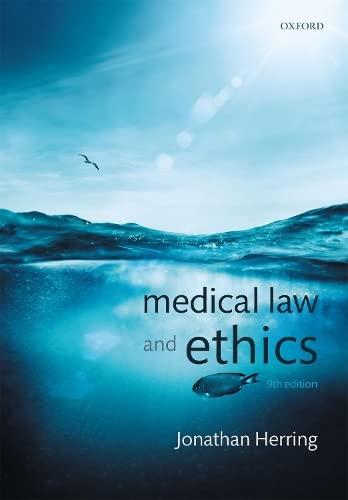Question
Asap Case 65987 : . The finished goods inventory includes all costs from the work-in-process inventory that have been completed during the period. 2. Inventories
Asap
Case 65987: . The finished goods inventory includes all costs from the work-in-process inventory that have been completed during the period. 2. Inventories are recorded net of unmarketable or obsolete inventory. This allowance is based on current inventory levels, past sales trends, and historical data in addition to management's estimates on market conditions and predictions for future market conditions and product demand. All of these things are subject to change, and therefore management must make proper and conservative estimates in order to have a correct estimate of inventory, which should be approximately equal to the fair value of the inventory. 3. a. This amount for unmarketable or obsolete inventory does not appear as a line item within the financial statements. This amount may be disclosed in the notes to the financial statements, but without such a note, it does not appear on the financial statements. b. Gross inventories 2011 - $243,870 Inventory amount on the balance sheet for 2011 - $233,070 Balance in allowance account at year-end 2011 - $10,800 27 Gross inventories 2012 - $199,214 Inventory amount on the balance sheet for 2012 - $211,734 Balance in allowance account at year-end 2012 - $12,520 c. The allowance for obsolete and unmarketable inventory would be attributed to the finished goods and raw materials inventories. The portions attributable to each type of inventory would be based on the proportion of total inventory that each type makes up. Obsolete inventory, by nature, could not be attributed to work-in-process inventory because the units would have to be finished or not yet begun to be considered unmarketable; for example, a portion of raw materials could be considered obsolete if some amount of raw materials was unused at the end of the period. 4. 2012 Cost of goods sold 13,348 Allowance for obsolete and unmarketable inventory 13,348 Allowance for obsolete and unmarketable inventory 11,628 Finished goods inventory 11,628
illiquidity risk and the small cap premium because Bloomberg does the so-called
Bloomberg adjustment formula. Is that true? 90. My investment bank told me that the beta provided by Bloomberg incorporates the
illiquidity risk and the small cap premium because Bloomberg does the so-called
Bloomberg adjustment formula. Is that true?
91. As my company is not listed, the investment banks apply an illiquidity premium.
Actually, they say it is an illiquidity premium but then they call it a small cap premium.
One of the banks, apparently based on Titman y Martin (2007), added the following
small cap premiums: "0.91% if the capitalization is situated between $1,167 and $4,794
million; 1.70% if the capitalization is between $331 and $1,167 million; 4.01% if it is
lower than $331 million". Another bank adds 2% because historically the return of small
companies was smaller than that of big companies. Which one is more appropriate?
92. Which taxes do I have to use when calculating the Free Cash Flow (FCF) - is it the
marginal tax rate or the medium tax rate of the leveraged company?
93. According to what I read in a book, market efficiency hypothesis implies that the
expected average value of variations in the shares price is zero. Therefore, the best
estimate of the future price of a share is its price today, as it incorporates all the
available information. Is that right?
94. An investment bank calculated my WACC. The report says: "the definition of the
WACC is WACC = RF + u (RM - RF); RF being the risk-free rate, u the unleveraged
beta and RM the market risk rate." This is different from what we have seen in our
class. Are they right?
95. I read in a sentence passed by the Supreme Court that, in order to value companies,
economic doctrine relies on intermediary methods between the practical models and the
'Anglo-Saxon' theoretical models common in the United States and United Kingdom,
and the criteria set by the Administration is the result of a combination of both
methods. This is completely different from what we have seen in class - is it correct?
96. Did you see the Vueling case? How is it possible that an investment bank set the
objective price of its shares in 2.50 per share on the 2nd of October of 2007, just after
placing Vueling shares at 31 per share in June 2007?
97. I suppose that a valuation consciously realized in my name tells me how much I have
to offer for the company, right?
98. Do expected equity flows coincide with expected dividends?
99. What is the difference between simple return and weighted return to shareholders?
100. Is there any indisputable model to value the brand of a company?
Step by Step Solution
There are 3 Steps involved in it
Step: 1

Get Instant Access to Expert-Tailored Solutions
See step-by-step solutions with expert insights and AI powered tools for academic success
Step: 2

Step: 3

Ace Your Homework with AI
Get the answers you need in no time with our AI-driven, step-by-step assistance
Get Started


